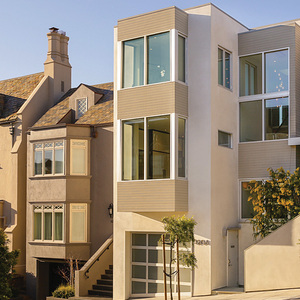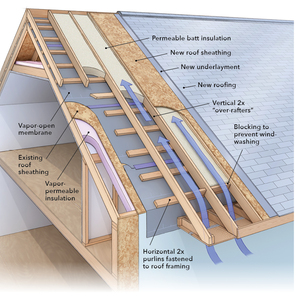Austin, Texas, architect Peter Pfeiffer has said it more than once: You get 90% of your building’s efficiency out of the first 10% of the design process. So it’s not surprising that a number of the green-building suggestions he shared at IBS start at the beginning. Here’s a quick recap:
• Be aware that every region should employ different green-building strategies that reflect that region’s climate, materials availability, and building practices.
• With regards to energy use, focus on conservation first. Modern homes typically waste 10% to 20% of the energy they consume. Do everything you can to control waste before considering renewable energy sources.
• Remember that a house is a system in which one feature or component affects the others, and design with this in mind.
• Roof overhangs, when properly sized, make for less building maintenance and longer-lasting structures. They also go farther in controlling unwanted solar gain than installing windows with low-e glass.
• Consider high windows. The daylight they provide contributes to energy savings and enhances the indoor environment.
• To prevent infiltration, install a moisture and vapor retarder on the warm (or more humid) side of the wall. In the North, this is usually the inside surface of the exterior wall (unless you are in an area where air-conditioning is used a lot); in the South, this is the outside surface of the exterior wall. Spray-foam insulation, by the way, is particularly handy because it is the vapor retarder, insulation, and air barrier all in one – often negating the need to worry about where to place a separate vapor barrier
• Limit the number of recessed cans (even the so-called “airtight” ones) that puncture the home’s thermal envelope. For the same reason, if you can, limit the number of light switches and electrical boxes on exterior walls.
• Never use anything but well-sealed ducts to move conditioned air. Ducts with a slick interior surface are best for delivering clean air and staying clean. Leaky ducts are a bigger energy-waster than low-efficiency air conditioners.
• Place water heaters close to the point of use to eliminate the need for energy-wasting circulation pumps. Gas units should be isolated from the indoor air of the home and should draw their combustion air directly from the outside.
• Protect and preserve the native trees on the building site. They provide shade and wind protection, and they enhance the marketability of the property.

























